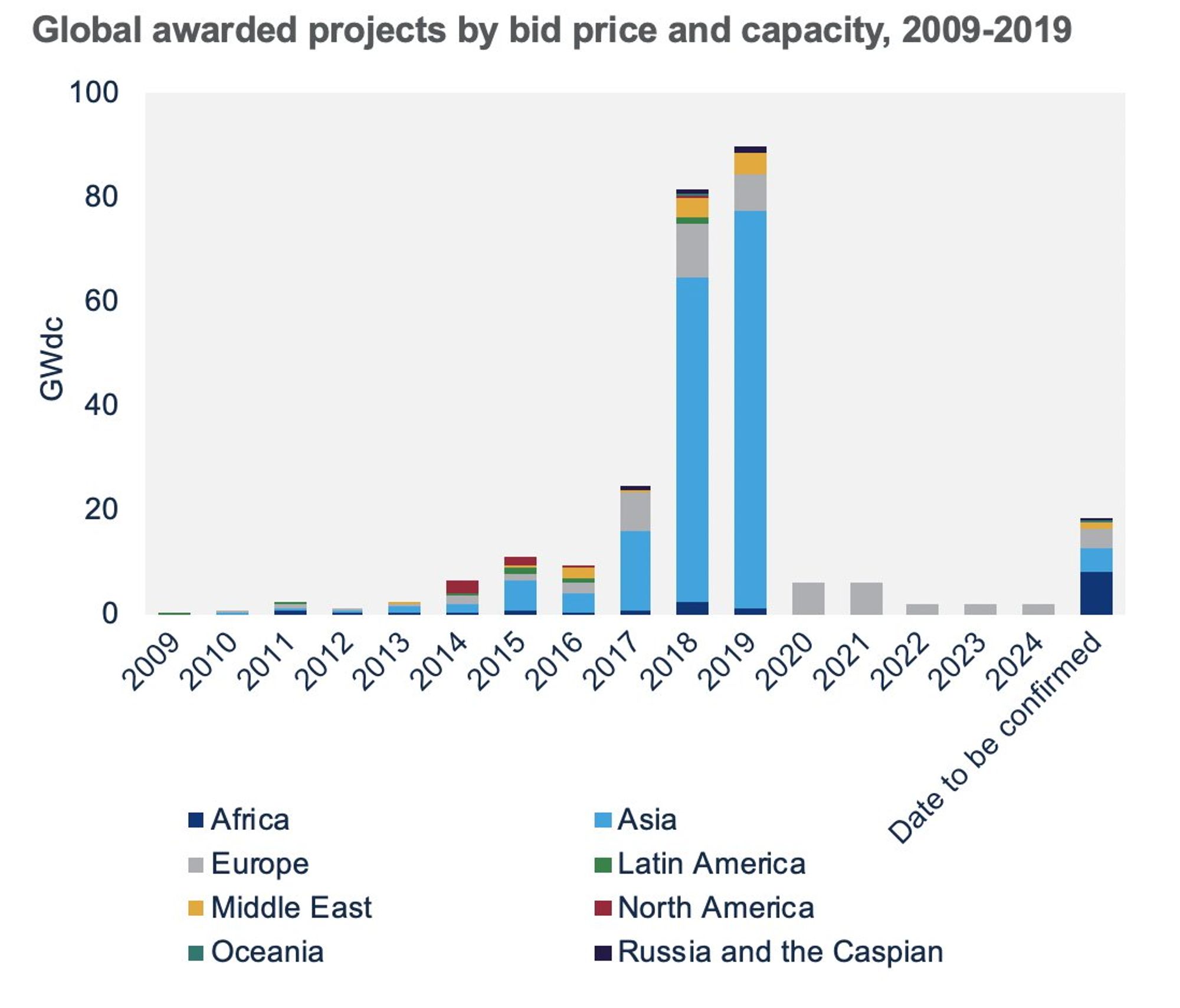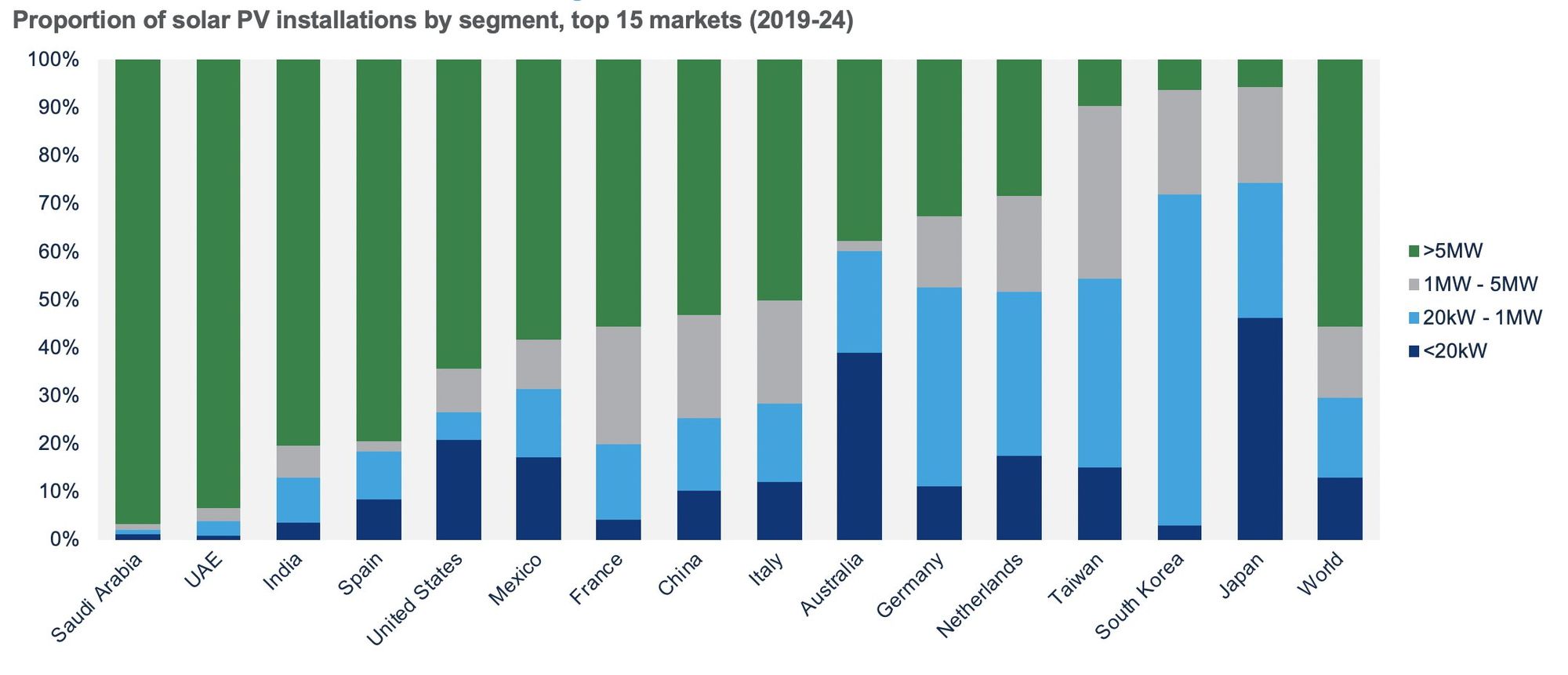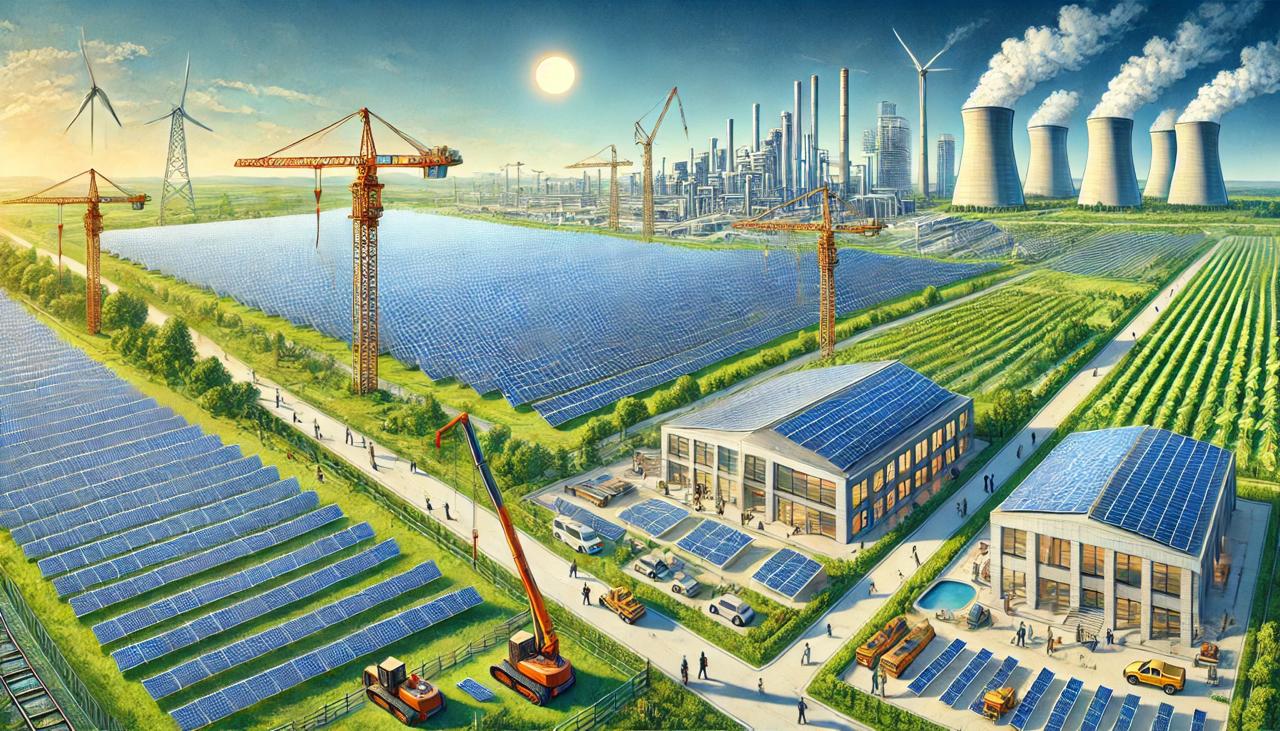Challenges Can't Stop the Growth of India’s Utility-Scale Solar Market
 Vaishali Garg
Vaishali Garg
Dear Readers,
India's journey towards renewable energy dominance is an electrifying narrative of ambition, innovation, and resilience. As the country strides forward, utility-scale solar power has emerged as a cornerstone in its renewable energy portfolio, offering a beacon of hope for a sustainable future.
Quick Request- Ensure you don't miss out by moving this email to your 'Primary' tab. With the introduction out of the way, let's get on with today's main story.

From Megawatts to Gigawatts: India’s Solar Energy Journey
A Remarkable Growth Trajectory
India's utility-scale solar market is witnessing unprecedented growth. In the first quarter of 2024 alone, the country installed an impressive 2.38 GW of utility-scale solar capacity, marking a 54% increase from the previous quarter. This surge is part of a broader trend, with analysts predicting that India will add more than 20 GW of solar capacity in 2024, of which 15.9 GW will come from utility-scale projects . This remarkable growth aligns with the government's ambitious target of achieving 500 GW of renewable energy capacity by 2030.
The Driving Forces
Several factors contribute to this robust expansion. The Indian government has ramped up its renewable energy tenders, offering 70 GW of new capacity in the fiscal year 2024, half of which is allocated to solar PV . Additionally, significant policy shifts, such as the deferment of mandatory domestic procurement for solar modules, have eased some of the supply chain constraints that previously hindered growth.
Navigating Challenges
Despite these advancements, the sector faces notable challenges. The imposition of a 40% import duty on solar modules and the requirement to use domestically manufactured components have strained the supply chain. Furthermore, environmental concerns, such as the impact of solar projects on the habitat of the endangered Great Indian Bustard, have sparked debates and necessitated careful planning and execution.
Spotlight on Major Players
Leading the charge in this solar revolution are key players like Adani Green Energy, ReNew Power, and UPC Renewables, which collectively contributed significantly to the newly commissioned utility-scale capacities in 2023. These companies, alongside top module suppliers like Waaree and inverter suppliers like Sungrow, are setting benchmarks in project execution and technology deployment.
Global Solar Trends
Two insightful charts provide a broader context to India's progress in the global solar market:

As you can see above, the dramatic increase in solar project awards globally over the past decade. Notably, Asia and the Middle East have seen significant growth since 2017, reflecting the competitive bidding and decreasing costs driving this renewable energy surge. This global trend mirrors India’s own ambitious solar initiatives, emphasizing its pivotal role in the global energy transition.

This shows the distribution of solar PV installations across various market segments. India stands out with a significant portion of its installations being utility-scale projects over 5 MW, underscoring its focus on large-scale solar developments to achieve its renewable energy targets. This highlights India's strategic commitment to expanding its solar infrastructure and the progress made in scaling up renewable energy capacity.
Future Prospects
The future of utility-scale solar in India looks promising. With a pipeline of 64 GW of projects under various stages of development and a supportive policy environment, the sector is poised for sustained growth. Analysts expect that favorable financing conditions and continued investor interest will further bolster this expansion, ensuring that India remains on track to meet its renewable energy targets.

Join the Solar Movement
As India continues its journey towards a greener future, your engagement is crucial. Whether you're a commercial property owner, a large landowner, a municipal official, or an industrial facility manager, there are numerous opportunities to contribute to and benefit from this solar surge. Embrace the power of the sun and join the movement towards a sustainable and energy-independent India.
Stay tuned for more updates and insights into the dynamic world of renewable energy. Together, let's illuminate the path to a brighter, greener future
Contact Us | Subscribe for Updates | Follow Us on LinkedIn
Until our next bright journey,
The Renewable Leader Team
Markt Upcoming Policies
CPSU Scheme Phase-II:
Aims to add 12 GW of PV installations with ₹85.8 billion in Viability Gap Funding for government producers to build ground-mounted power plants for government agencies or discoms.
Development of Solar Parks and Ultra Mega Solar Power Projects:
Targets 40 GW of PV installations by 2026, with state governments allocating land and SECI overseeing project development, providing Central Financial Assistance to developers.
PM-KUSUM:
Launched to ensure electricity for agricultural land, aiming to add 34.8 GW of PV capacity by 2026 through solar power plants on agricultural land and solar PV irrigation pumps.
Did you know?

Transparent Solar Panels:
Researchers are developing transparent solar panels that can be used on windows and smartphone screens. These panels harness ultraviolet and infrared light, allowing visible light to pass through. This technology has the potential to transform buildings into energy-generating structures without altering their appearance.

Solar Panels Work in Space:
Solar panels have been powering spacecraft since the 1950s. The International Space Station (ISS) uses large solar arrays to generate over 100 kW of power, ensuring that the station remains operational. Space agencies are continually innovating solar technology to maximize efficiency in the harsh conditions of space.
Subscribe to my newsletter
Read articles from Vaishali Garg directly inside your inbox. Subscribe to the newsletter, and don't miss out.
Written by
